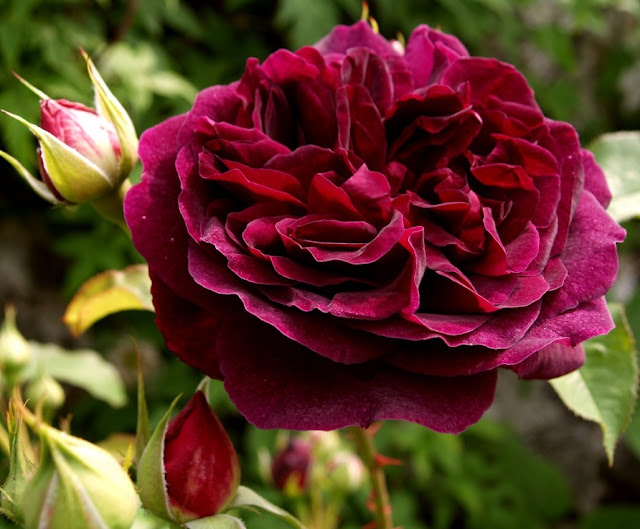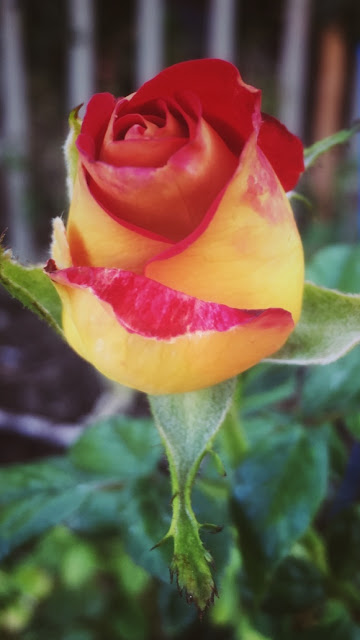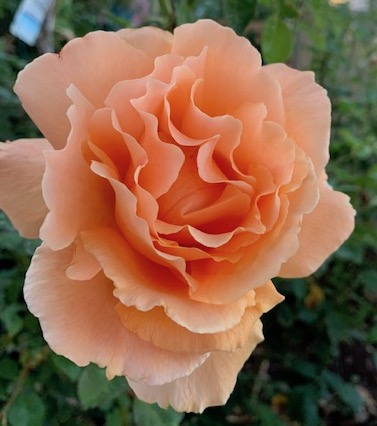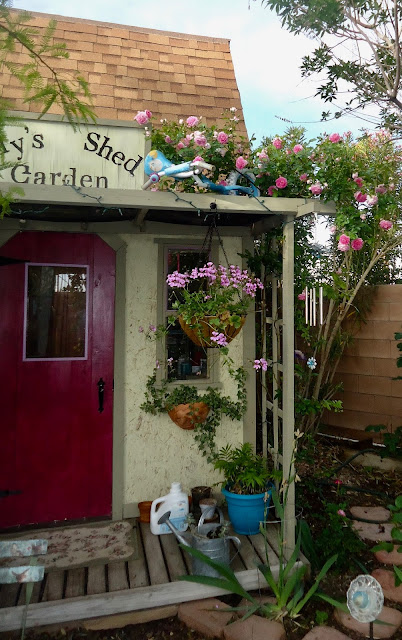Wednesday, November 14, 2018
Thursday, October 18, 2018
7 Fall Flowers for the Southwest Garden
Did you know that many spring blossoms will bloom earlier, for longer periods, and on taller stems if planted in the fall? Here are 7of my favorite flowers to plant in your fall garden.

1. Sweet Peas (Lathyrus odoratus). An old cottage garden favorite, rambling sweet peas in all shades of pastels take off when planted alongside a fence line or allowed to overtake a trellis. Plant in rich, amended soil and water deeply and regularly to encourage vigorous roots. To prolong flowering, pick stems or deadhead often. plant early in the fall for early spring bloom.
2. Garganzia. A native of South Africa, the daisy-like gazania flower is a member of the aster family and can tolerate dry climates. Gazanias are hardy and will thrive in most soils, no matter how poor the quality is. Ranging from terracotta to bright yellow in color, gazania plants grow an average of 12 inches and bloom during the spring and summer months. These flowers grow as a perennial in zones nine to 11 and as an annual in zones three to eight. Gazania flowers will blossom in the first year.
3. Poppies (Papaver somniferum) A show stopper. Lovely, old-fashioned beauty, this poppy is a must for country or cottage gardens. Impossibly substantial peony-like pastel blooms from white to rose to deep purple. Not pastel like easter kitsch, but pastel like classy Victorian. The gene pool spans singles and doubles, many with frilly deeply serrated petals. Very top heavy, 3-4’ plants benefit from staking or dense cluster-planting for support. Old and rare variety. The seed pods produce lots of great poppy seeds for baking. This annual with its big peony-like flowers is among the most lovely you can grow.
4. Hollyhocks (A. rosea.) No cottage or country garden would be complete without showy stalks of hollyhock. Once you have planted your hollyhocks, they will need minimal care, The one benefit that comes from growing hollyhock flowers is that they easily reseed themselves. While they may be short-lived, in their proper growing conditions they will continually grow more, which will keep the hollyhock flowers consistent in years to come. Growing hollyhocks in your garden will add some drama and new height.
5. Flowering tobacco (Solanaceae (nightshade) contains the poisonous belladonna and datura species, as well as vegetable garden favorites like potatoes and eggplant. Flowers of the genus Nicotiana bear some resemblance to petunias, another nightshade relative, in appearance and evening fragrance. Flowering tobacco plants produce fuzzy, sticky foliage and flower stalks with nodding trumpet-shaped flowers. Each flower has five petals that flare at the end. The flower colors complement one another so that you can plant a mix for an attractive large nicotiana bed. Most varieties are various shades of pink, white, red, and pale green. Nicotiana cultivars vary from 18 inches to 5 feet in height. Gardeners looking for tall flowering tobacco varieties should stick with heirloom types, as newer compact varieties are bred to flower while still growing in nursery six-packs.
6. Love Lies Bleeding. Amaranthus (A. caudatus) A. caudatus, commonly known as “love lies bleeding,” a large, showy plant with unusual and striking red plumage that offers summer and fall drama. As the plant matures, impressive, large, and red-tinged light green leaves are joined by long “tails” of drouping flower heads populated by hundreds of tiny deep-crimson blooms. Also known as tassel flower, the plant’s 2-foot-long “tails” can retain their color for six to eight weeks and look especially striking when planted with chrysanthemum, sunflower, or viburnum.
7. Larkspur (Consolida sp.) Growing larkspur flowers (Consolida sp.) provides tall, early season color in the spring landscape. Once you learn how to grow larkspur, you will likely include them in the garden year after year. Once established. However, larkspur flower care is simple and basic. When planting larkspur seeds, they must have a cold period before germination. This can be accomplished before planting the seeds, after planting the seeds in peat pots, or after sowing the seeds directly in the flower bed. The most reliable method of chilling larkspur seeds before planting can be done in the refrigerator. Chill protected seeds for two weeks before planting. Place seeds in a ziplock sandwich bag and include some damp perlite to provide moisture. Larkspur seeds often will not germinate at temps above 65 F. (18 C.). Learning when to plant larkspurs that have been chilled requires knowing when the first frost date occurs in your area. Planting larkspur seeds should be done early enough before frost for them to begin developing a root system to hold them over through winter. Growing larkspur flowers do not like to be moved, so plant seeds into their permanent location. Spring planting of larkspur seeds can be done, but flowers may not reach their full potential.
#judyscottagegarden #roses #flower #garden #naturepower #petals #naturelovers #plants #love
#judyscottagegarden #roses #flower #garden #naturepower #petals #naturelovers #plants #love
Wednesday, August 29, 2018
She-sheds for the Desert Cottage Garden
Looking to escape from the burning heat? A small. she-shed at the corner of your lot is the ideal hideaway. I added s small air-conditioner and a small refrigerator to mine and it now serves multiple purposes. We use it as a pool house, potting shed, plant shelter from heat and cold, snack depot for the pool area and last but not least extra storage for pool supplies, gardening supplies, gardening tools and plants.
I use my she-shed to start seedlings and new plants in the winter.
At the back of my she-shed, I enclosed another 6'x9' with bubble wrap to overwinter tender Brugmansia's and to start new plants.
I found a variety of Shed's on Pinterest that you might be interested in viewing. I have taken some ideas from almost each of them.
I have an assortment of watering cans, found at yard sales and I thought this was a neat idea of how to display them.
I loved the color combination on this Shed. It inspired me to paint
my She-shed door purple.
Tuesday, August 21, 2018
Clematis for the Southwest Cottage Garden
Clematis are not as hard to grow as you may think. In the Southwest garden, it takes more effort than in the eastern garden but it can be done. First, the Clematis roots MUST be planted in the shade and be mulched heavily. The tops or growing vines must then be in the sun to bloom. If you meet these two criteria then you will have a successful growing clematis plant.
For proper care of clematis, clematis vines prefer sunny locations (at least six hours of sun needed for blooming) but the soil should be kept cool. An easy way to accomplish this is by planting some type of ground cover or shallow-rooted perennial plants around the clematis. A 2-inch layer of mulch can also be incorporated to keep the roots cool and moist.
Growing clematis vines must be supported in some fashion as well. The type of support system is usually dependent on the variety grown. For instance, poles are acceptable choices for smaller growing clematis vines, which can range anywhere from 2 to 5 feet in height. Arbors may be more suitable for growing larger types, which can get 8 to 12 feet. Most varieties, however, do quite well growing along a trellis or fence.
Clematis vines are usually planted in fall or early spring, for the desert garden.
Clematis plants need plenty of space for adequate air flow as well as a rich, well-draining planting area. You should dig the hole large enough to accommodate the plant, with most recommendations suggesting at least a two foot depth of soil amended with compost prior to planting. It may also help to cut the plant back some before planting to lessen shock as it adapts to its new environment.
Once established, care of clematis vines is minimal with the exception of watering. They should be watered about an inch or so weekly, and more deeply during dry spells. Mulch should be replenished each spring. In addition, be on the lookout for common problems affecting these plants. Clematis wilt can cause vines to suddenly collapse and die after their foliage and stems have blackened. Powdery mildew often affects plants with poor air circulation. Aphids and spider mites can be a problem as well.
Annual pruning may also be required to keep clematis plants looking their best. Pruning clematis helps plants remain both attractive and full of flowers. The type of clematis vine grown dictates when and how it should be pruned.
For example, early spring-blooming varieties should be pruned back as soon as possible following their blooming but before July, as they bud on previous season’s growth. Large-flowering types that bloom in mid spring should be cut back to the topmost buds in late winter/early spring. Late-blooming varieties should be pruned back about two or three feet in late winter/early spring.
Nothing is more satisfying than seeing your efforts pay off with a plant covered in flowers year after year! Clematis can be a part of any size garden and they live for very many years. Since Clematis live up to 50 years or more, you should take the time to plant each one carefully.
Saturday, August 18, 2018
Fall is the Time to Plant in the Southwest Garden
Fall has distinct planting benefits. Autumn's cooler air temperatures are easier on both plants and gardeners. The soil is still warm, allowing roots to grow until we experience a freeze.
Preparation – Before you plant, you need to get the garden ready. If you are planting in the ground, be sure to add some horse manure or aged cow manure to give the soil extra nutrients. I also inoculate the soil with mycorrhizae–myco means fungus and the suffix means root, so literally root fungi, a word used to indicate a symbiotic relationship between the two. Buy mycorrhizae to add to the planting bed especially around the roots of little plants. Since most of the zone 9b is dry, I add fertilizers to the soil that helps retain moisture. Besides the ones already mentioned you can add other nitrogen-rich additives such as rabbit manure, alfalfa, and cottonseed meal, and for good vegetable and or flower production you also need phosphorus. I use rock phosphate. Also, don’t forget about the potassium. Potassium (or potash) helps plants use water. The best source of potassium for the organic garden is greensand. You can also add wood ash, but it is high in lime so it can lower your pH.
Planting: Don't overwater, but make sure the plants get at least 1 inch of water one time per week. If the temperatures stay hot, then water every day until cooler weather descends.
- Vegetables: I usually grow Lettuce, spinach, radishes and collard greens and some kale and other greens with a short maturity time can be planted later in the season. Carrots are a must every year as they germinate quickly, and we do not have the usual pest that seems to harvest the root crops. Carrots taste sweeter when they're harvested after frost.
Perennials: In the long growing season of zone 9b the perennials get to monster size and need to be divided every season, and fall is the only time to do this successfully.
Peony, Irises, Echinacea, Shasta daisy, and mums are all best choices for hot, desert conditions. Geraniums are ideal for pots for winter blooming, but sadly go dormant or dead in the summer heat.
- Petunias are the perfect basket plant, they grow quickly and are healthy and fragrant at the same time.

- Spring Bulbs: I have tulips, daffodils, lilies, crocus, and several other varieties of spring bulbs that faithfully put on a grand show for me every year. Plant these in late October.
 Geraniums will perform best in pots for the fall and winter months. Bring them in if the temperatures dip down below 40 degrees.
Geraniums will perform best in pots for the fall and winter months. Bring them in if the temperatures dip down below 40 degrees.
Stock is a cottage garden favorite and grows and blooms almost non-stop in the desert setting.
Nasturtium grows the best in the fall-winter months and will self-sow and bloom every year in the fall and winter.
Tree: Even though in zone 9b you can plant all year round, fall is a better time to plant trees. The love the cooler temperature to settle in and develop their roots. The high heat of the summer months puts them into shock, and they don’t grow they just go into survival mode (as we humans also do).
Subscribe to:
Posts (Atom)





















































